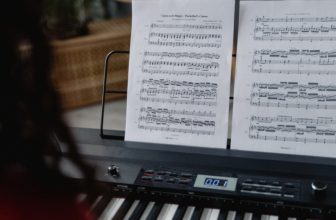9 Different Types of Noise – The Colors of Sound

In audio engineering, noise signals are divided into colors according to their frequency spectrum. This happens because noise running at different frequencies is perceived differently. Different types of noise have unique properties and can be used for relaxation and other therapeutic purposes.
People use the term “noise” to refer to any undesirable sound, from city traffic to a bad song. However, colored noise such as white, pink, and brown noise can be defined as a random sound signal playing at a constant spectral frequency (vibration). Each color of noise has a particular density.
Both light and sound are made of waves that can be perceived by the human brain. It’s our perception of light that allows us to discern that the color red is different from the color green (for example). The same concept applies to colored noise. Just like green is determined by the frequency of light waves, green noise is determined by the frequency of sound waves.
Learning to identify the different types of noise, however, isn’t as easy as discerning red from green. The colors of noise are relatively abstract concepts, mathematically defined by their frequencies. These frequencies are random but obey specific spectral density formulas. For each different color of noise, there’s a different formula.
Contents
The Different Colors of Noise
Since colored noise is randomly produced, it’s not easy to identify different colors of noise merely by listening to them. I have decided to include a sample for each of the different colors of noise listed below. For this purpose, I’ve used the album “technicolors” by Ryoji Ikeda, which features all nine different noise types.
White Noise
White noise is the most commonly known type of noise color. It’s defined as a sound signal containing random and different frequencies playing at the same intensity.
Just like the color white is the sum of all colors, white noise is the sum of all frequencies. In other words, white noise isn’t biased towards any particular section of the frequency spectrum.
Some people perceive white noise as being high-pitched (eg. static, fan, air conditioner). However, this happens because our ears are programmed to listen to high frequencies louder, not because the high frequencies contained in white noise signals are more prevalent than the mid and low frequencies. For more information on that concept, see our article on the Fletcher Munson curve.
Pink Noise
Pink noise is like white noise, but it’s arranged according to the way humans perceive sound. In a pink noise signal, random and different frequencies play at different energy levels per octave so all octaves can be perceived evenly. Sounds complicated, right? Allow me to explain.
As stated, the human ear is better equipped to perceive high frequencies than low frequencies. For this reason, the energy levels in a pink noise signal drop -3dB per ascending octave. If the lowest octave in the spectrum is playing at 70dB, for example, the second-lowest note should be playing at 67dB, and so forth.
This happens because pink noise is intended to sound like what white noise would sound if we had perfect, non-biased ears. It’s an attempt at creating an even noise signal that, despite not being mathematically even like white noise, should be even to our ears.
Brown Noise
Also known as red noise, brown noise is generated according to Brownian motion. The concept refers to a random pattern of motion used to describe the behavior of particles inside a liquid or gas medium. You can learn more about this natural phenomenon here.
From an audio engineer’s standpoint, brown noise is similar to pink noise but presents an even more drastic decrease in energy levels from low to high frequencies (in this case, a -6 dB reduction per octave).
Brownian noise sounds lower than white and pink noise and is commonly used for relaxation and concentration purposes, including reading.
Violet Noise
In a nutshell, violet noise is the opposite of brown noise. Whereas brown noise sounds low and muffled, violet noise sounds high and bright. Generated by a similar random pattern, it adds 6dB per octave from the lowest to the highest octave.
Violet noise (or purple noise) is a very interesting color of noise because it’s commonly branded as a therapeutic treatment for tinnitus.
Blue Noise
Blue noise can be perceived as a lighter version of violet noise, as only 3dB are added per octave from the lowest to the highest octave. It’s commonly used in audio dithering. It sort of sounds like a watering hose hiss, doesn’t it?
Gray Noise
To understand gray noise, it’s important to know the concept of A-weighting. The term refers to a sound measurement adjustment made according to how human ears perceive noise. Gray noise takes on the A-weighting frequency spectrum and feeds our ears with the opposite frequencies.
As a result, gray noise sounds as if every frequency in the spectrum was playing at the same level (it’s not, but it is according to our biased ears).
In the sample above, you can listen to how cohesive and “blocky” gray noise sounds compared to other noise colors, with no clear distinction in energy between the low and high frequencies of the spectrum.
Green Noise
Green noise focuses on the mid frequencies of the spectrum to imitate the noise we perceive in nature. Once again, the sample above proves useful: doesn’t it sound a lot more like a field recording than a randomly-generated noise signal?
Green noise is the noise color you’d want to add as the background track of a movie scene because listening to it feels a lot like being on a busy street.
Orange Noise
Orange noise is arguably the most mysterious noise color because it uses all the frequencies of the spectrum except for the frequencies that we’d consider to be in tune. In other words, orange noise excludes all the frequencies that make a specific musical note (such as 440 Hertz, the frequency of A).
While some people have described listening to orange noise as “listening to an out-of-tune orchestra,” it’s hard to define exactly what makes orange noise orange in purely sonic terms. In Ryoji Ikeda’s “technicolors,” orange noise is listed as yellow.
Black Noise
Just like the color black can be described as the absence of light, black noise can be defined as the absence of sound. To put it bluntly, black noise is the lack of noise.
FAQs (Frequently Asked Questions)
Why is Noise Therapeutic?
Noise colors are used for many purposes. Pink noise, for instance, can be helpful for mixing and mastering and used to tune sound systems before a live show. White noise is used in programming for, among other purposes, generating data for random number generators. But why is it that so many people use noise signals therapeutically?
It has all to do with the way our brains work. Our primal instincts kick in whenever we can recognize distinguishable sounds in silence. At night, with no one around, the sound of a man walking can be enough to trigger our brains into thinking we’re in danger. The same doesn’t happen whenever there’s enough background information to keep our brains entertained.
Many people rely on white noise machines for sleeping because they cannot “turn off” if there’s too much silence. In a blank canvas, even the tiniest dot can stand out. The same happens if there’s no noise around: we’re easily distracted by the quietest of sounds and we lose our focus.
Noise acts as a replacement for the lack of background noise, providing an abundance of sound information to keep our brains entertained. That’s why so many people rely on noise for studying; random noise signals cancel the other distracting sounds around and allow people to zoom in on their tasks.
What Color Noise is Best Suited for Sleeping?
For sleeping, white and pink noise are most suited to help in that department. However, some people also use rain sounds, thunder sounds, ocean sounds, ASMR, and more to help with insomnia. Even though some may help more than others, it is a personal preference in the end.
What Color Noise Soothes Anxiety?
Pink and brown noise (or even white noise) can help soothe anxiety. These noises can help promote calm thoughts, concentration, and even better sleep for most people. Though, of course, people can react very differently to different types of noise, so be sure to use whatever works best for you.
Is Rain Considered White Noise?
Despite what many people believe and think, rain is considered pink noise rather than white. Even though it is very similar to the hum and nature of white noise. In turn, that is why rain sounds help people sleep better.
Is Sleeping with Sound/Noise Bad?
Sleeping with sound or noise is considered positive for many people with insomnia, however, you should always do your research and avoid noises that can have a negative impact on your sleep pattern.
Summary
Noises aren’t all equal. Just like light waves create a palette of colors when they interact with our brains, so do sound waves. Noise colors are divided in a less intuitive, more mathematical way than regular colors. However, they tell a lot about how we interact with the world. They offer explanations for what we hear, what we don’t hear, and how we hear.
Understanding the different types of noise is also helpful for understanding how sound works when pitches aren’t involved. They’re sound in its purest form: untouched, non-musical, randomly-generated, and emotionless.





